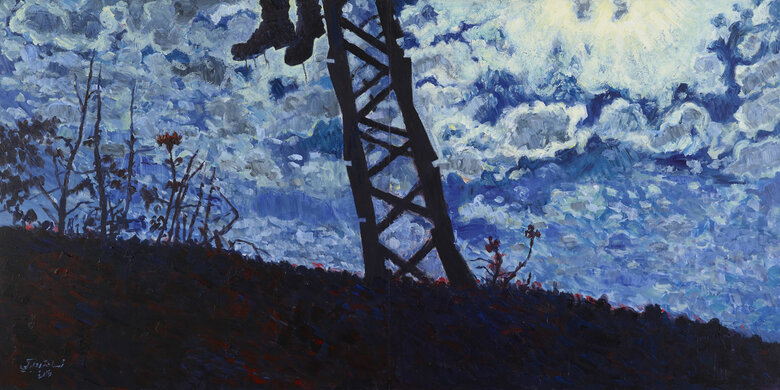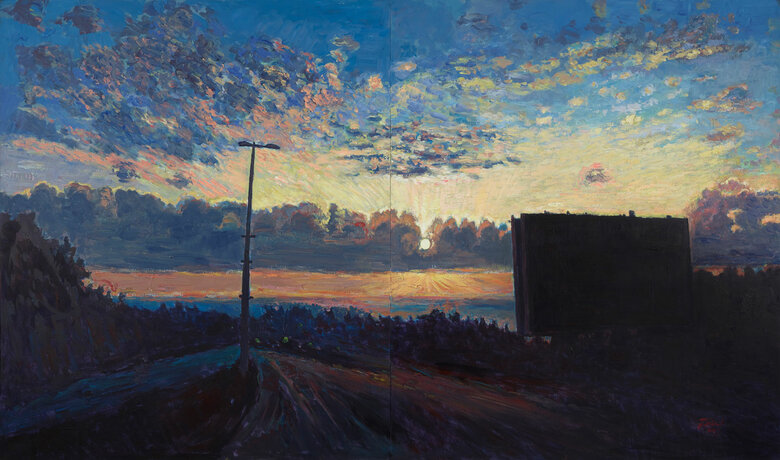Baalbaki’s depiction of French poet Charles Baudelaire is inspired by the subject’s perhaps most well-known photograph taken by Etienne Carjat in 1860.
Though painted in Baalbaki’s usual black and white color palette, typical of his portraits, a nostalgic nod to black and white photography, the painting seamlessly incorporates elements from modern times. The central cursor on Baudelaire’s forehead, as well as the yellow flower set behind his head, a reference to the poet’s most renowned poem collection Les Fleurs Du Mal, suggests the art work could have been extracted or modified by the internet.
However, unlike a photograph’s static and objective representation of its subject, Baalbaki’s Baudelaire is anything but. The thick, short brush strokes used by the painter imbue the subject, from background to cloak, with such depth he seems to be ready to leap out of the painting. Through a masterful interplay of light and shadow, Baalbaki accentuates Baudelaire’s brooding expression, as if to reveal the subject’s inner state rather than faithfully represent his external features, making the poet come alive and appear almost in motion.
By blurring the lines between reality and fiction, the portrait ultimately challenges the rigid demarcation across artistic media and demonstrates their synergistic potential.
signed in arabic and dated in English front lower left



-OussamaBaalbaki-Front.jpg)
-OussamaBaalbaki-Front.jpg)
-Front.jpg)
-Front.jpg)





